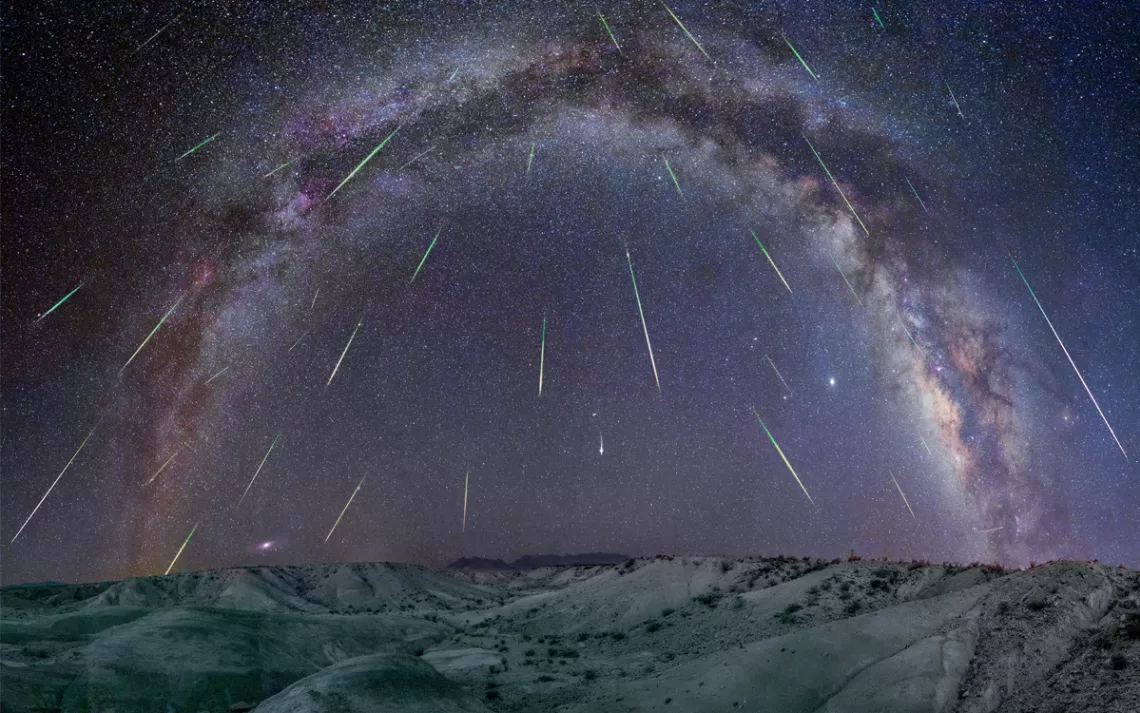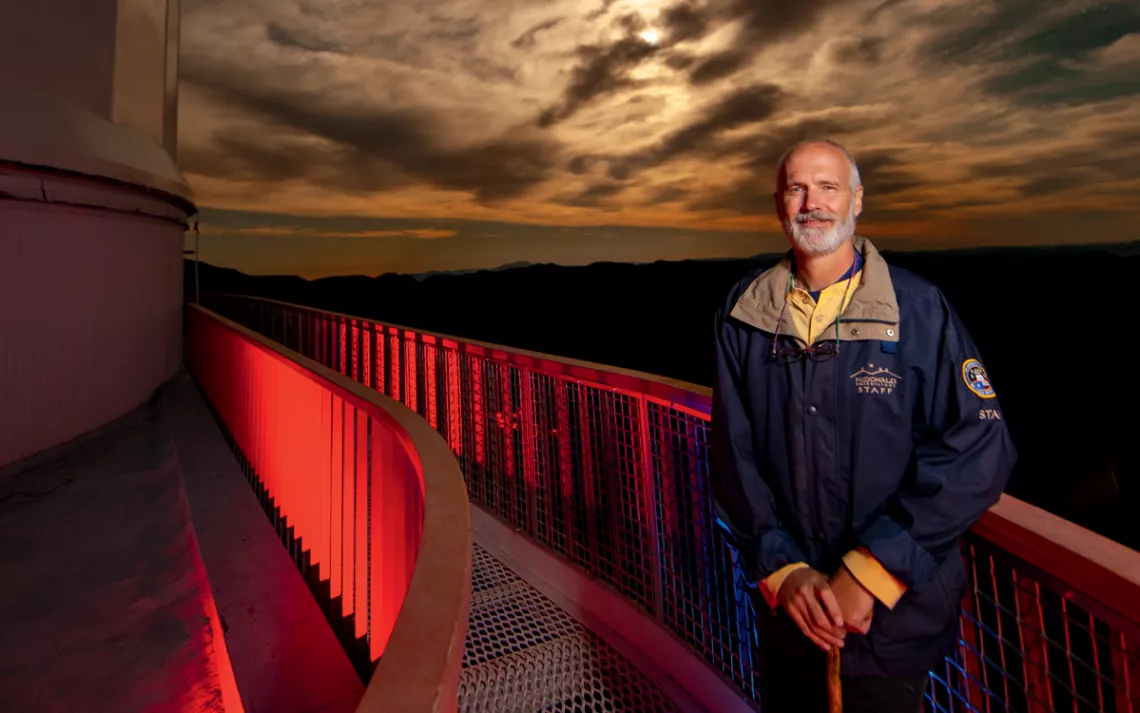How Best to Protect the Night Sky?
Bill Wren has spent decades helping to preserve dark skies

Photo by Jason Weingart
Bill Wren fell in love with the stars in the inky-black skies of central Missouri. In his childhood backyard, he tinkered with his binoculars, gazing at the craters and mountains of the moon. Then, at age 15, Wren moved with his family to Houston. It was a jarring experience—when he looked up at night, he could no longer see the stars. Though he didn't yet have a name for it, this was his introduction to the growing problem of light pollution. Today, one-third of humanity—including 80 percent of Americans—can no longer see the Milky Way.
To avoid the bright city lights, Wren would flee whenever he could, driving nearly an hour and a half northwest of Houston, astronomy books and telescope in tow. He began to understand the value of observing a truly dark sky. "It's almost a mystical experience, that sense of being connected, the sense of unity and oneness," Wren says. His early obsession would grow into a lifelong effort to preserve dark skies and one day earn him the moniker the Angel of Darkness.
Wren graduated from the University of Texas at Austin in 1980. To put himself through graduate school, he worked as an academic tutor for the university's undergraduates. His students would gush about one astronomy professor, Frank Bash, so much that Wren decided he had to meet him. He took the elevator up to Bash's office on the 15th floor and introduced himself. The professor had a class to teach, so he invited Wren to attend. Over the next three semesters, Wren observed Bash's courses, filling stacks of yellow legal pads with notes that deepened his understanding of the night skies he loved.

Dark-skies advocate Bill Wren at McDonald Observatory | Photo by Woody Welch
One day after class, Bash pulled Wren aside and told him about an open position at UT's McDonald Observatory, at a remote site in the West Texas desert. Wren eventually moved over 450 miles from Austin to begin a job as a public affairs specialist at the observatory, giving tours by day and hosting star parties at night. A month later, he attended the second annual meeting of the International Dark-Sky Association in Tucson, Arizona, where he learned more about the threats posed by light pollution.
Beyond impeding our view of the universe, light pollution robs wildlife of the natural cycles they rely on. Migratory birds wander dangerously off course; baby sea turtles struggle to find the ocean. Artificial light has adverse effects on human health as well, disrupting our circadian rhythms and contributing to depression and sleep disorders. But Wren didn't leave the conference in despair—he'd also learned some hopeful solutions. One key takeaway: "There's no conflict between having well-lit property, safety on the ground, and dark skies overhead."
In the following decade, while working at the observatory, Wren didn't have much time to devote to preserving night skies, but he found time outside his job to speak to neighboring communities about light pollution. Then, in the early 2000s, health problems forced him to go on disability for a time, and as he eased back into work, his focus shifted to dark-skies preservation. Wren ramped up his outreach to more communities. He quickly realized that officials and the general public were wary of his message, assuming he was there to ask them to turn off their lights. Wren took pains to explain what good lighting looks like, gradually winning over his audiences. By 2011, all seven counties surrounding the McDonald Observatory had adopted lighting ordinances. "You have to show them examples of good and poor light in their community. When people see the difference with their own eyes, it's very powerful," Wren says.
Eventually, Wren turned his attention to the Permian Basin. "The biggest threat to the dark skies over McDonald Observatory was the oil and gas, not just the drilling and processing but the exploration and production of oil and gas," he says. Wren gave presentations to drilling crews and visited executives in Houston and San Antonio, patiently explaining that by pointing light downward, using less blue light, and lowering the light intensity whenever possible, the companies would see direct benefits. "They saved money," Wren says. "The visibility was better. It increased worker safety by getting glare out of their eyes."
Jerry Rogers, an alumnus of the National Park Service and an admirer of Wren's grassroots advocacy, says that preserving night skies "requires someone, somewhere exercising leadership to keep attention on it, to keep things happening, and to celebrate the local successes." Bill Wren has been that someone in West Texas and beyond.
Wren began traveling around the country and even internationally to evangelize about good lighting. When the pandemic struck in 2020, the trips came to a halt. Stuck at a desk, pushing paper, he began to plan for retirement, though there was one more thing he wanted to do. To preserve in perpetuity the West Texas skies he loved, Wren helped apply to have the Big Bend region recognized as an official dark-sky reserve. In April, the International Dark-Sky Association announced the certification of the Greater Big Bend International Dark Sky Reserve, the largest in the world.
Now retired, Wren is focused on new threats to dark skies. "The next big thing, as far as the night sky goes, is all these communication satellites," he says. "In the evening twilight, you'll look up and the constellations will be fluid because there will be so many satellites moving around. It's going to be insane, honestly."
This article appeared in the Summer 2022 quarterly edition with the headline "Angel of Darkness."
 The Magazine of The Sierra Club
The Magazine of The Sierra Club



